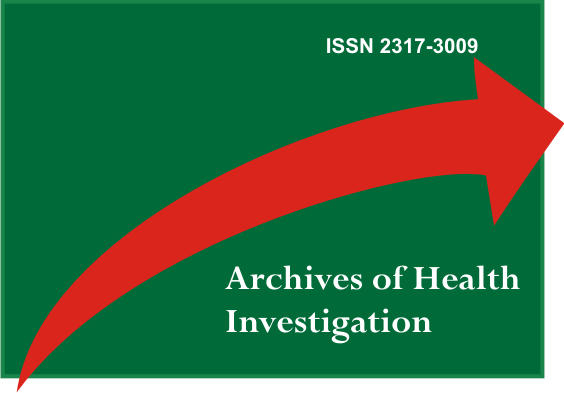Immediate reconstruction with autogenous graft after removal of recurrent ameloblastoma, treated 8 years previously
DOI:
https://doi.org/10.21270/archi.v6i1.1774Resumo
Ameloblastoma is the most common benign odontogenic tumor of the jaw, being most frequently found in the mandible, especially in the body and branch regions. The treatment depends on the aggressiveness of the lesion and if not properly treated, can result in significant morbidity. The objective of this study is to report the case of a 29-year-old patient with a history of ameloblastoma which had been enucleated, recurring after 8 years of evolution. The tumor recurrence was treated through mandibular resection and reconstruction with an iliac crest bone graft. The patient is being monitored and is currently post-operative 50 months, showing no signs of recurrence to date. Ameloblastomas are lesions which present unpredictable behavior and thus require close monitoring irrespective of the treatment.Descriptors: Ameloblastoma; Mandibular Neoplasms; Odontogenic Tumors.
Downloads
Referências
Ghandhi D, Ayoub AF, Pogrel MA, MacDonald G, Brocklebank LM, Moos KF. Ameloblastoma: a surgeon's dilemma. J Oral Maxillofac Surg. 2006; 64(7):1010-4.
Bianchi B, Ferri A, Ferrari S, Leporati M, Copelli C, Ferri T, et al. Mandibular resection and reconstruction in the management of extensive ameloblastoma. J Oral Maxillofac Surg. 2013; 71(3):528-37.
Gardner DG, Heikinheimo K, Shear M, Philipsen HP, Coleman H. Ameloblastomas. In: Barnes L, Eveson JW, Reichart P, Sidransky D. World Health Organization Classification of Tumors. Pathology & Genetics of Head and Neck Tumours. Lyon: IARC Press; 2005. p. 296-300.
Singh M, Shah A, Bhattacharya A, Raman R, Ranganatha N, Prakash P. Treatment algorithm for ameloblastoma. Case Rep Dent. 2014:121032.
Herford AS, Boyne PJ. Reconstruction of mandibular continuity defects with bone morphogenetic protein-2 (rhBMP-2). J Oral Maxillofac Surg. 2008; 66(4):616-24.
Antonoglou GN, Sándor GK. Recurrence rates of intraosseous ameloblastomas of the jaws: a systematic review of conservative versus aggressive treatment approaches and meta-analysis of non-randomized studies. J Craniomaxillofac Surg. 2015; 43(1):149-57.
Kim SG, Jang HS. Ameloblastoma: a clinical, radiographic, and histopathologic analysis of 71 cases. Oral Surg Oral Med Oral Pathol Oral Radiol Endod. 2001; 91(6):649-53.
Nakamura N, Mitsuyasu T, Higuchi Y, Sandra F, Ohishi M. Growth characteristics of ameloblastoma involving the inferior alveolar nerve: a clinical and histopathologic study. Oral Surg Oral Med Oral Pathol Oral Radiol Endod. 2001; 91(5):557-62.
Sachs SA. Surgical excision with peripheral ostectomy: A definitive, yet conservative, approach to the surgical management of ameloblastoma. J Oral Maxillofac Surg. 2006; 64(3):476-83.
George J, Kamboj M. Ameloblastoma - An enigma. J Oral Biol Craniofac Res. 2012; 2(3):203-5.
Takahashi K, Miyauchi K, Sato K. Treatment of ameloblastoma in children. Br J Oral Maxillofac Surg. 1998; 36(6):453-6.


